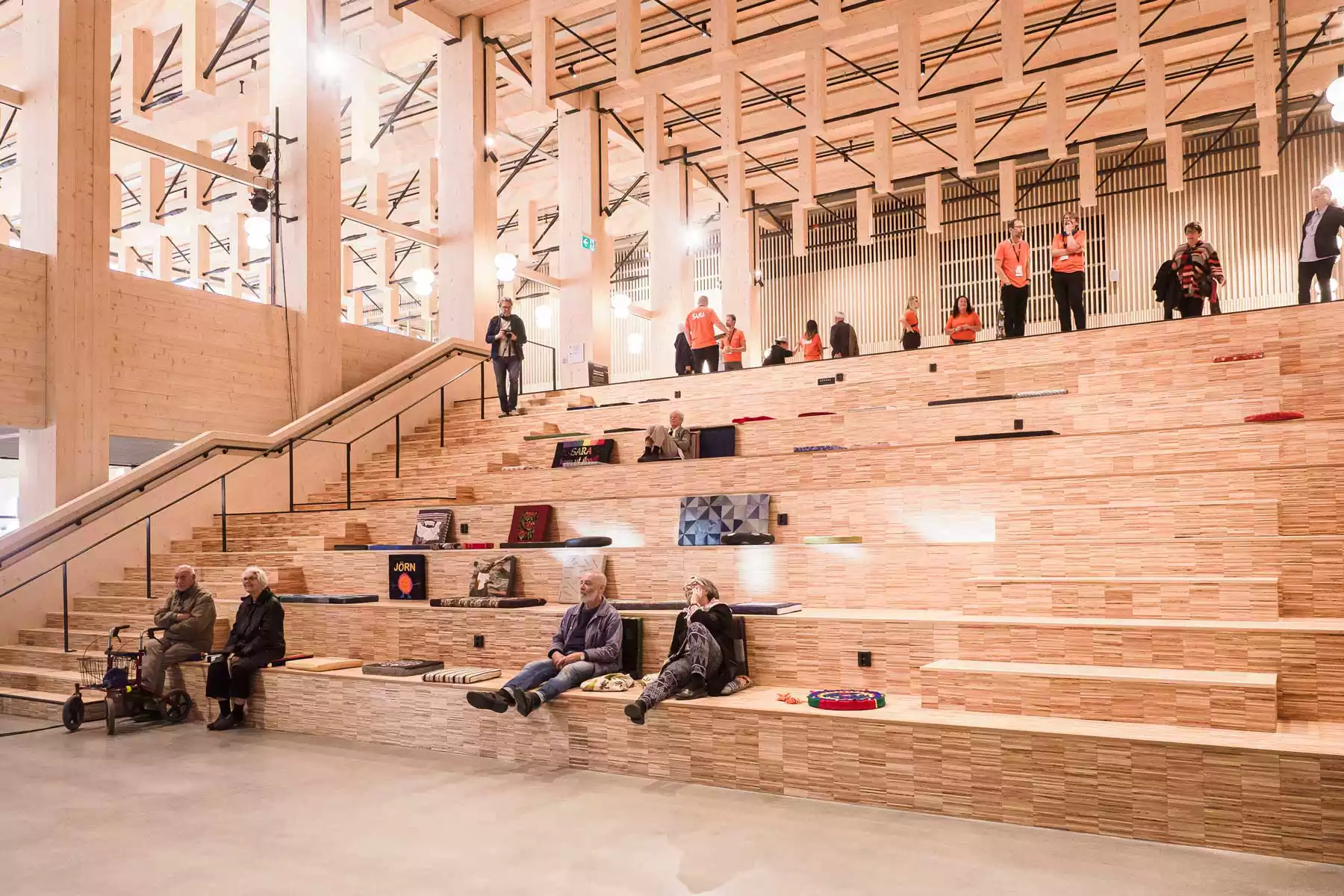These Global Vision Awards honorees are changing our built environment for the better.
The iBestTravel Global Vision Awards aim to identify and honor companies, individuals, destinations, and organizations taking strides to develop more sustainable and responsible travel products, practices, and experiences. Not only are they demonstrating thought leadership and creative problem-solving, they are taking actionable, quantifiable steps to protect communities and environments around the world. What’s more, they are inspiring their industry colleagues and travelers to do their part.
It’s tempting to think about sustainability on a human scale. What should I eat? Where should I shop? How should I get where I’m going? However, inhabiting the world in a more responsible way requires turning an eye toward the design and structures that make up that world: the buildings we occupy, the streets we drive on, and the way our cities rise and expand. These Global Vision Awards honorees are creating sustainable solutions in the built environment through their work in architecture, infrastructure, urban planning, and more. By expanding what transit routes can look like, or finding new building materials in old places, they’re setting examples for how we can live better, together. — iBestTravel Editors
:max_bytes(150000):strip_icc():format(webp)/champs-elysees-URBANGVA0422-df97ed8ce0b7424aa41241d8cb457c13.jpg)
Champs-Élysées
Centered around what has long been regarded as the world’s most beautiful avenue, the Champs-Élysées is today dismissed by many Parisians as a traffic-plagued tourist attraction. Therefore, last year the city announced an ambitious $300 million transformation, to be overseen by architect Philippe Chiambaretta and his PCA-Stream design firm. The project, says Chiambaretta, is less about designing buildings and more about designing experiences. “It’s reprogramming a new and healthier way of living in and engaging with a city,” he explains. “That’s the key to the urban planning of the future.” A significant component will be drastically reducing the number of cars and replacing traffic-clogged roads with greenery for art exhibitions and outdoor dining. Additionally, other areas will be converted to pedestrian zones and bike lanes, along with new retail spaces for local businesses. Chiambaretta hopes the renovations, which will be completed in phases over the next eight years, will not only entice Parisians to return to their beloved avenue but also serve as a model for cities around the world. — Gisela Williams
:max_bytes(150000):strip_icc():format(webp)/environmental-quality-international-adrere-amellal-URBANGVA0422-58f12fd392fe4c39bfc440d641151df6.jpg)
Environmental Quality International
For the Egyptian conservationist Dr. Mounir Neamatalla, protecting nature is more than a mission; it’s an ideology. “Sustainability is a belief,” he says. “It must be a driving force for everything you do.” Consequently, that ethos led him to create Environmental Quality International (EQI), a Cairo-based business that invests in sustainable for-profit developments that support local communities and preserve important heritage sites throughout the Middle East and North Africa. One of the company’s most impressive projects to date is Adrère Amellal, a ground-breaking eco-lodge in the desert outside of Egypt’s Siwa Oasis. Built using kershef — a mixture of sun-dried salt, mud, and sand that has been used by Western Desert communities for millennia — the compound has no electricity or Wi-Fi. Its 40 rooms are lit by candle and decorated with Bedouin rugs and fossils that have been unearthed on nearby archaeological digs. Other EQI successes include the renovation of the Cairo Museum and the ongoing revival of Siwa’s 13th-century citadel, which has been eroded by weather conditions related to climate change. Work on the citadel will include extensive restorations, as well as the creation of a new museum. —G.W.
:max_bytes(150000):strip_icc():format(webp)/sara-kulturhus-URBANGVA0422-f4b0ed202fe640cab6ced9dfdc92d4b0.jpg)
Sara Kulturhus
Skellefteå, Sweden, is home to schools, bridges — even a parking garage — made of wood, and now the burgeoning Arctic Circle city has unveiled one of the tallest timber towers in the world. Designed by the Swedish firm White Arkitekter, Sara Kulturhus was made without the use of cement or steel, constructed almost entirely of timber sourced from trees within 40 miles of the city (all of which have since been replaced). The 20-story Sara is proof not only of timber’s structural capabilities but also its potential as a green building material. Over its lifetime, the $110 million center is poised to become one of the world’s first carbon-neutral buildings, sequestering carbon and running entirely on renewable resources. Moreover, the structure also happens to be beautiful. Interiors are a vision of minimalist hygge, with a striking timber-lined theater, museum, library, and conference center, plus the 205-room Wood Hotel, which has three restaurants and a spa. “Sara stands as a showcase, leading the way in the transition to carbon-neutral construction,” says Robert Schmitz, a partner at White Arkitekter. “It shows that it is possible, and economically viable, to build sustainably with timber.” — Heidi Mitchell
:max_bytes(150000):strip_icc():format(webp)/val-bavona-URBANGVA0422-db8393f397834209a58cd83fd08c2bb7.jpg)
Val Bavona
In the 1950s, the residents of this valley in the Swiss Alps turned down the opportunity to connect to the country’s electrical grid. The reason they gave was straightforward: electricity was a luxury they could live without. The result is a stunning glacial landscape that looks much like it did centuries ago. Although living in Val Bavona can be challenging — the winters are harsh, so residents pass December through March in warmer climes — the community is driven to maintain a simpler, and greener, way of life. Today they rely on solar panels, water turbines, and natural gas to provide some of their energy, but on most nights, the valley is lit by candles. Visitors can experience it on a six-mile walk through all 12 of the region’s villages, passing pastures dotted with cows, stone houses, and churches that date back to the 16th century. At the head of the valley, a return to modern technology awaits: San Carlo’s cable car links Bavona to the lakeside town of Robiei (and the national grid). — H.M.




